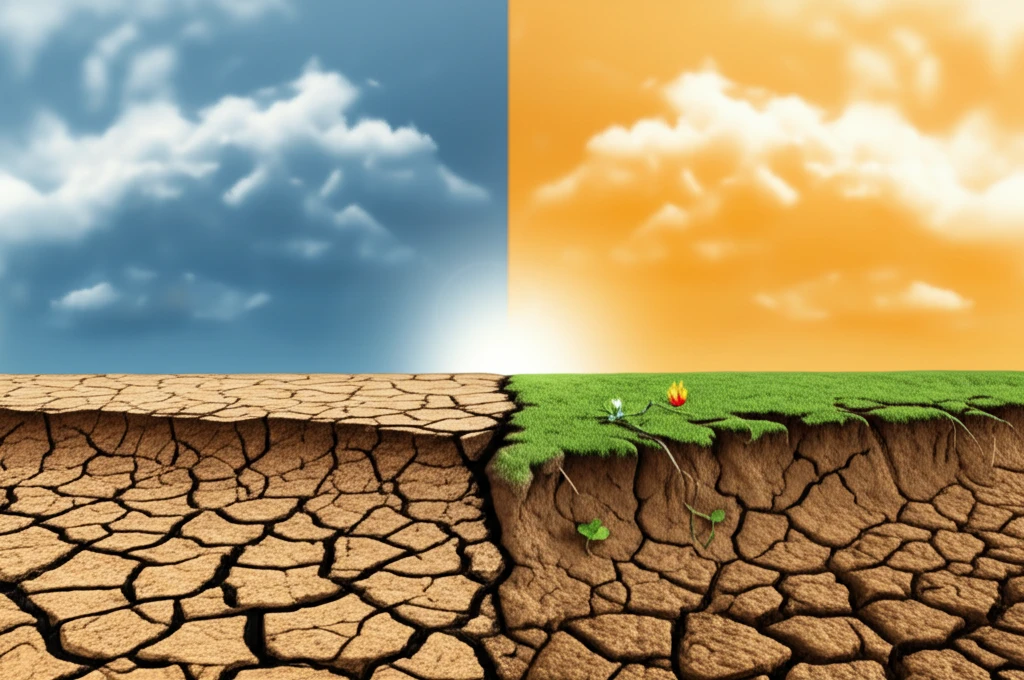
Decoding Desert Temperatures: How Soil and Plants Impact Daily Climate
"Uncover the secrets of arid and semi-arid regions and how initial soil moisture and vegetation can influence temperature ranges, with new findings from climate research."
The daily temperature range (DTR), the difference between the highest and lowest temperatures in a day, is a critical indicator of climate change. It impacts everything from agricultural yields to the health of ecosystems and human populations. A significant amount of research has focused on understanding and predicting DTR, especially in regions vulnerable to environmental shifts.
In arid and semi-arid climates, DTR can be particularly pronounced, influenced by factors such as soil moisture and vegetation cover. These regions, characterized by water scarcity and sparse plant life, are sensitive to even minor changes in climate conditions. Understanding these dynamics is essential for effective environmental management and sustainable development.
Recent research highlights the complex interplay between soil moisture, vegetation, and temperature ranges. By exploring these interactions, scientists aim to refine climate models and improve predictions, offering practical insights for managing resources and mitigating the adverse effects of climate change.
The Balancing Act: Soil Moisture vs. Vegetation

A recent study focused on arid and semi-arid regions in China reveals the intricate relationship between initial soil moisture (SMOIS) and vegetation fraction (Fg) and their impact on the diurnal temperature range (DTR). The research employed Weather Research and Forecasting (WRF) model simulations, modifying SMOIS, surface emissivity, and Fg to observe the resulting changes in daily maximum (Tmax) and minimum (Tmin) temperatures.
- Energy Distribution: Soil moisture influences how energy is distributed between sensible and latent heat fluxes.
- Surface Emissivity: Changes in soil moisture modify the surface's ability to emit radiation.
- Vegetation Impact: Vegetation cover affects surface radiation and energy budgets, influencing temperature ranges.
Implications and Future Directions
Understanding the complex relationship between soil moisture, vegetation, and diurnal temperature range is crucial for predicting and managing the impacts of climate change, particularly in vulnerable arid and semi-arid regions. The study's findings emphasize the need for integrated approaches that consider both soil and vegetation dynamics to mitigate adverse environmental effects. Further research, combining observational data with advanced modeling techniques, will continue to refine our understanding and inform effective strategies for sustainable resource management.
